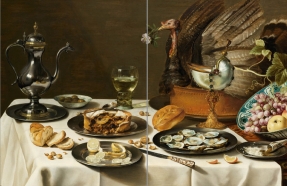Exploring the History of Turkey Management and Domestication: A Transatlantic Perspective
Departmental News
Posted: Aug 27, 2025 - 11:00pm

A new edited volume, Exploring the History of Turkey Management and Domestication A Transatlantic Perspective, published by the Museum d'Histoire Naturelle in Paris this past June, features articles by a suite of UNM students and former students, including Caitlin Ainsworth, Scott Kirk (PhD, UNM 2021), and Cyler Conrad (PhD, UNM 2018).
Abstract
The turkey (Meleagris gallopavo) is an iconic bird, widely associated with festive dishes in Europe, North America, and Central America, and extensively raised worldwide. Yet, its long-term interactions with human societies remain poorly synthesized, with significant regional imbalances in research. The role of turkeys in North America has been extensively studied, while their post-colonial dispersal and evolving cultural significance globally have received far less attention.
This volume brings together specialists to explore the paleontology of Meleagris, the early stages of turkey management and domestication in North America, and its subsequent global expansion. Following a chronological structure, the first part examines turkey-human interactions in the Americas before European contact (~500 years ago), with chapters on well-studied regions (Southwestern USA, Northern Mexico, and Mesoamerica) alongside lesser-known areas (Southern Central America and Eastern USA).
The second part traces the last 500 years of turkey history, exploring artistic depictions, historical accounts, and archaeozoological evidence from multiple European countries, spanning Western Europe to the Baltic and Central Europe. It also examines the global spread of domestic turkeys, their reintroduction to the Americas through the colonial economy, and their further dispersal across the Pacific. Blending comprehensive syntheses with original case studies, this volume offers new insights into the history of turkey management, domestication, and cultural symbolism through to the 21st century.
